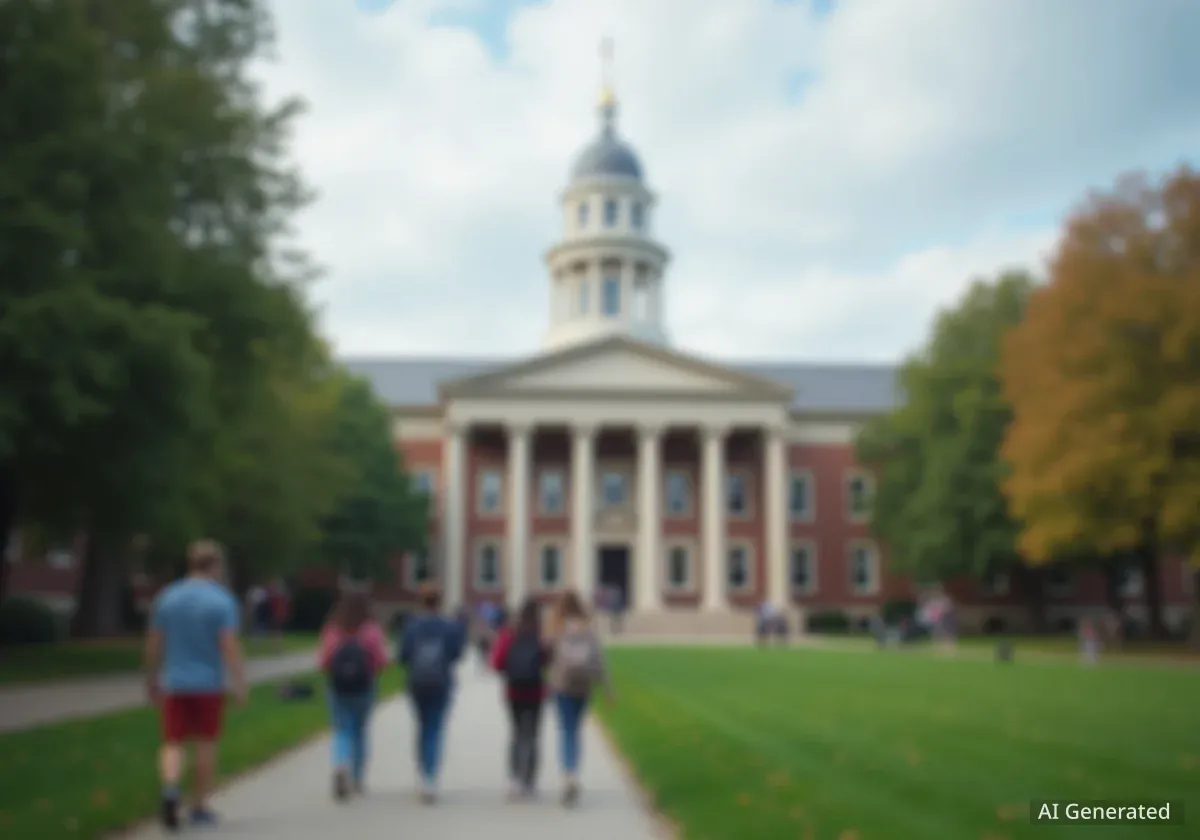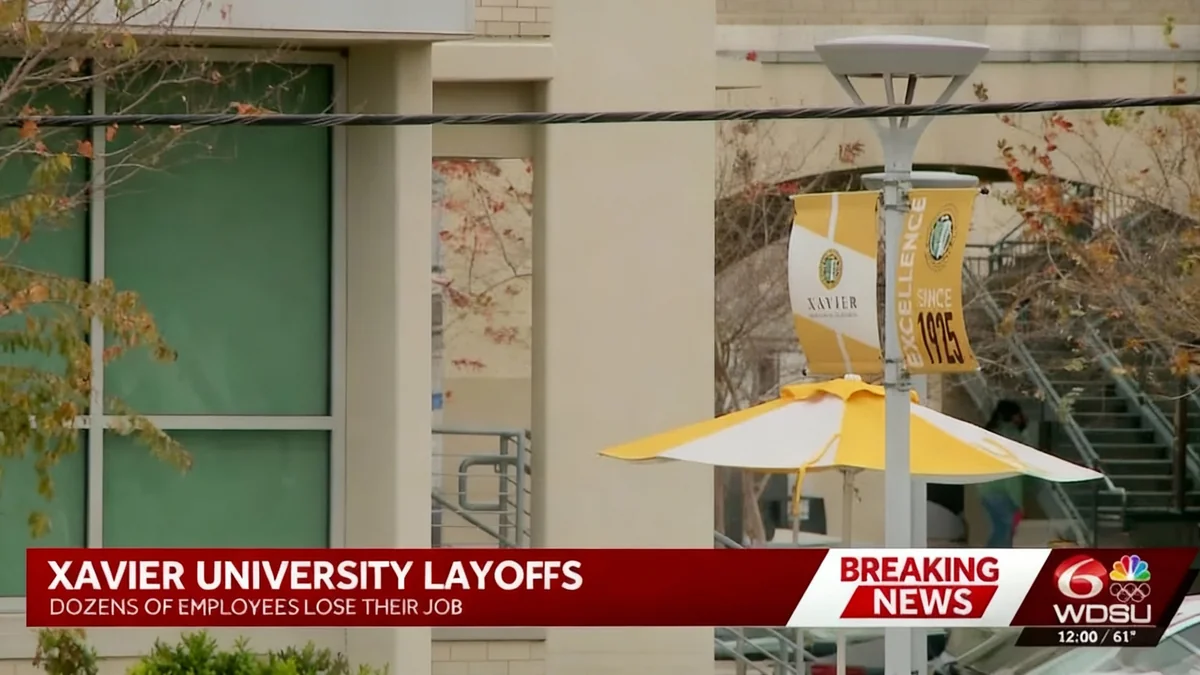The University of Nebraska system has reached a significant financial milestone in 2024, spending more on administrators and professional staff than on its faculty for the first time this century. This shift reflects a long-term trend where administrative expenditures have more than tripled over the past 25 years, while faculty compensation has failed to keep pace with inflation.
Key Takeaways
- In 2024, the University of Nebraska allocated $484 million to administrators and managers, exceeding faculty payroll for the first time.
- Administrative spending has surged from $155 million in 2000, a more than 200% increase.
- When adjusted for inflation, overall faculty spending has declined by 10% in the last decade, while administrative costs have risen by 54%.
- The number of administrative and professional employees (5,462) now surpasses the number of faculty members (4,725) across the university system.
A Deepening Financial Divide
An analysis of the University of Nebraska's budget reveals a profound change in its spending priorities over the last quarter-century. While nominal salaries for some professors have increased, the real value of their pay has diminished due to inflation. For instance, a music professor at the University of Nebraska-Lincoln who received a $13,000 salary increase over ten years actually experienced a 16% pay cut when adjusted for inflation.
This trend is not isolated. A political science professor at the Kearney campus and a social work professor at the Omaha campus saw similar inflation-adjusted decreases in their earnings, despite nominal raises of $15,000 and $19,000, respectively. This financial reality highlights a growing gap between investment in academic instruction and administrative operations.
By the Numbers: Inflation's Impact
Over the past 10 years, after adjusting for inflation, spending on faculty at the University of Nebraska-Lincoln (UNL) has decreased by 23%. System-wide, the decline is 10%. In contrast, administrative and professional costs have grown by 54% in real terms during the same period.
Faculty leaders have expressed concern that this trend devalues the core academic mission of the university. John Shrader, president of the UNL faculty senate, warned about the potential consequences.
"... (I)f we keep devaluing the academic side of what we do at the university, then you’re going to get less performance. And that’s not what I think the governor, the Legislature and the Board of Regents want. This is a manifestation of the lack of investment."
The spending shift comes as the university system navigates significant budget cuts. Following a state appropriation that was lower than requested, NU has initiated $20 million in cuts. This is in addition to $75 million in cuts at UNL over the past five years, with another $27.5 million planned.
The Rationale Behind Administrative Growth
University officials attribute the surge in administrative spending to the increasing complexity of modern higher education. They argue that roles in areas like student housing, parking services, campus life, and building operations have become essential and often function as self-sustaining revenue sources.
Anne Barnes, senior vice president and CFO for the NU System, explained that these departments are run like small businesses. "They’re kind of like little individual businesses. They’re expected to break even, they’re expected to meet consumer demands," she stated.
This expansion is also a national trend, according to Robert Kelchen, a higher education finance expert at the University of Tennessee. He noted that universities must now manage more complex business operations and meet greater student demands for services like mental health support.
Expanding Roles and Responsibilities
The university has added staff to manage a variety of new and growing functions, including:
- Student Services: Expanded mental health services and housing administration, such as when UNO added dormitories.
- Athletics: New professional staff to oversee name, image, and likeness (NIL) activities for student-athletes.
- Research and Compliance: Administrators who manage federal grants, ensure research compliance, and commercialize intellectual property.
A Shift in Workforce Composition
In 2010, the number of faculty members and administrative/professional staff at the University of Nebraska was nearly identical, at just under 4,000 each. By 2024, the university employs 4,725 faculty members but has grown its administrative and professional workforce to 5,462 people, an increase of roughly 1,400 positions in 15 years.
Understanding University Funding Streams
The university's budget is divided into two primary categories, which helps explain the spending disparity. NU System President Jeffrey Gold emphasized the distinction between these funds.
The state-aided budget, a combination of state appropriations and student tuition, is the most flexible source of funding. According to the university, half of this budget is dedicated to paying professors and instructors. However, even within this flexible pool, administrative spending has grown significantly. Over 25 years, faculty spending from this budget doubled, while administrative spending increased by 158%.
The designated and restricted budget consists of money from grants, contracts, and revenue-generating departments like housing. These funds have strict limitations on their use. "If we get a contract from the Department of Defense to work on a computer program for them, we can’t use that to buy light bulbs and floor wax for the College of Journalism," Gold explained. A large portion of the growth in administrative costs is paid for from these restricted funds.
Faculty Concerns Amid Budget Cuts
While university leaders argue that administrative roles are vital for securing revenue through grants and contracts, some faculty members remain critical. William Aviles, a professor at the University of Nebraska at Kearney and president of the faculty union, described the trend as illustrative of a national problem.
"The idea that all this (administrative) spending has been disproportionately going upwards … it’s disgusting, it’s unfortunate. It so markedly illustrates that (national) trend in terms of spending and where the resources are being accumulated."
President Gold cautioned that cutting administrative positions too deeply could harm the university's ability to generate revenue. He stated that these employees are crucial for processing research contracts and federal grants that have become a major part of the university's income. "We get asked all the time, ‘Why can’t you just cut more?’ Well, if we can’t process these requests, that will hurt us even more," he said. As the NU Board of Regents prepares to vote on further budget cuts, the debate over the university's spending priorities continues to intensify.





